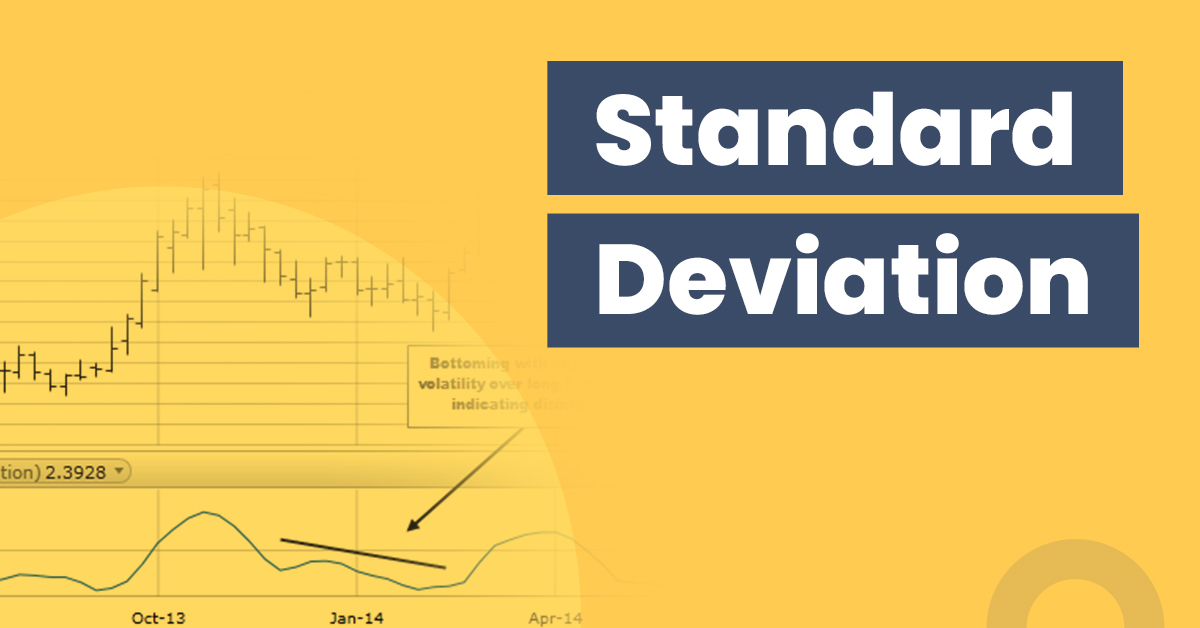Standard Deviation in Mutual Funds: Meaning, Calculation and More Details


When you decide to invest in mutual funds, you should evaluate various parameters, such as risks and returns, before choosing a scheme most suitable for your financial needs. A thorough assessment of the risks associated with a mutual fund helps investors make better investment decisions.
Standard deviation in mutual funds is a statistical measurement that helps investors better understand a scheme’s volatility and risks.
What is Standard Deviation in Mutual Funds?
Standard deviation is a statistical tool that provides information about a financial instrument’s underlying volatility or risk. This statistic provides information about the extent to which a mutual fund’s returns can deviate from the arithmetic mean of its annual returns.
A scheme with a high standard deviation means that the mutual fund has high volatility. In other words, investors of a scheme with a high standard deviation is likely to face higher fluctuations in its returns.
How does the Standard Deviation Work?
In statistics, the standard deviation measures the amount of variation for a set of data. For mutual funds, the standard deviation measures the variation of returns against a market index or another fund. The higher the variation, the higher the risk of investing in the fund.
Let us use an example to understand standard deviation. Suppose Arun has invested in a mutual fund with a standard deviation of 4% and average returns of 15%. This means that the fund’s returns can deviate by 4% on the higher side (i.e., the fund will generate 19% of returns) or 4% on the lower side (i.e., the fund will generate 11% of returns).
If a mutual fund has a low standard deviation for a large time frame, say 4 to 5 years, it means the fund has maintained consistency in generating returns over a long time frame.
How to Calculate Standard Deviation of Mutual Funds?
The following is the formula for the standard deviation of returns in mutual funds:
Standard Deviation = √((∑ (xi- x ̅ )2)/(n-1))
Here, xi = A fund’s returns across a specific period
x ̅ = Average return value of the data set
n = Total number of data points
Here is a step-by-step guide to calculating the standard deviation of a fund:
Step 1: Make a list of the annual returns of a mutual fund.
Step 2: Calculate the mean of the investment returns for the specified period.
Step 3: Subtract the mean value from the returns of each year.
Step 4: Square the deviation of each year.
Step 5: Add up all the values.
Step 6: Divide the result by the total number of years – 1 (n-1).
Step 7: Calculate the square root of the obtained value to get the mutual fund’s standard deviation.
Let us understand this further with an example. The table below provides the details of mutual fund A:
| Year | Annual Mutual Fund Returns | Deviation from Mean | Square of Deviation of Mean |
| 1. | 14 | 4.2 | 17.64 |
| 2. | 11 | 1.2 | 1.44 |
| 3. | 19 | 9.2 | 84.64 |
| 4. | -4 | -13.8 | 190.44 |
| 5. | 9 | -0.8 | 0.64 |
Mean = 9.8
Summation of the square of deviation from mean = 294.8
n – 1 = 4
Variance = 73.7
Standard deviation = 8.58 (This is the square root of variance).
Why Is Calculating the Standard Deviation important?
Given below are some reasons why standard deviation in mutual funds is an important statistical tool:
- Standard deviation enables investors to assess whether a particular scheme is suitable for their risk profiles or not. With the help of this mutual fund statistic, investors can compare and see whether the risks associated with a fund are aligned with their own risk-taking ability.
- Considering that standard deviation takes into account the total risk of a mutual fund instead of its market-linked volatility, it can be a more useful ratio than beta.
- It can also be used to compare funds of the same category. For example, when similar schemes show different standard deviations, it indicates that these funds operate in different ways.
- Standard deviation gives potential investors an idea about how a fund might perform in the future.
Though the standard deviation is an important measurement for mutual fund-related investment decisions, still like every other metric, standard deviation also has certain limitations.
Limitations of Using Standard Deviation
Despite being a useful metric, standard deviation has certain limitations as below:
- The standard deviation only measures the historical volatility of a scheme. As a result, it has to be evaluated together with a mutual fund’s alpha, beta and sharpe ratio to better understand the overall risks associated with the investments.
- The standard deviation of a mutual fund does not mean anything unless a person compares it to that of other similar funds. Another major drawback of this metric is that it considers both positive and negative dispersions from the average returns.
- Financial experts have put forward an important argument that standard deviation only shows a fund’s expected volatility range. As a result, a fund’s actual volatility might be higher or lower than its expected range. This inaccuracy can affect investors’ decisions negatively.
- Generally, the standard deviation is used to evaluate the volatility of individual mutual funds. So, if an investor’s portfolio comprises multiple schemes, it will be complicated to calculate the combined standard deviation to know the expected volatility range of the entire portfolio.
Some Important Points Regarding Standard Deviation
- Low-risk mutual funds, such as debt schemes, generally have a lower standard deviation when compared to equity funds which involve higher risk.
- A longer investment period corresponds to a lower standard deviation. This is because a longer investment horizon tends to bring down the volatility associated with mutual funds.
- Please note that a mutual fund with a higher standard deviation might not always mean that it is highly volatile or yields unstable returns. It might also result from the entire category or the market being subjected to fluctuations.
- Similarly, a debt fund with a low standard deviation may not always be a good investment choice.
- As mentioned, standard deviation considers both positive and negative dispersions from the average returns. Positive returns increase the standard deviation in the same way as negative returns. However, while positive dispersions are desirable, negative dispersions from the average are not.
Final Word
Evaluating your risk appetite is a crucial step before investing in any mutual fund. The risks and volatility associated with a particular scheme are other important factors that you must consider.
Assessing standard deviation in mutual funds allows you to understand the volatility of a fund. It helps you choose a fund whose risk levels you are comfortable with, contributing to better investment decisions. However, you must consider the fact that standard deviation also has some limitations as well.
Frequently Asked Questions
What is a good standard deviation?
There is no such thing as a good or bad standard deviation. However, mutual funds that have a low standard deviation are subject to less volatility. Investors can assess the standard deviation of a fund to check whether a scheme is suited to their risk profile or not.
What does a high standard deviation indicate?
A fund with a high standard deviation portrays a higher degree of variation from the mean. However, investors need to note that it indicates the data spread. It doesn’t indicate whether a fund is good or bad.
Is there any difference between mean deviation and standard deviation?
Both mean and standard deviation calculate the extent of variation. But there are crucial differences as well. For example, calculating mean deviation is more effective when there is a high dispersion level. However, people calculate standard deviation when there is a normal distribution of data points.







